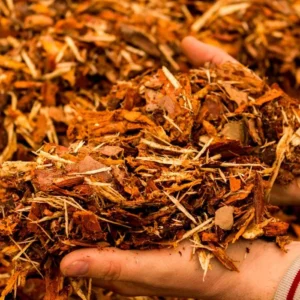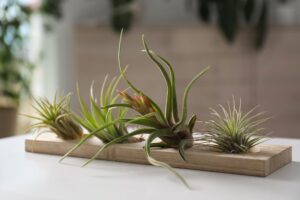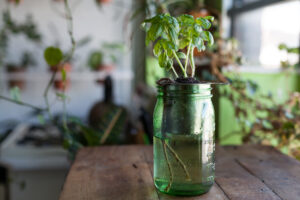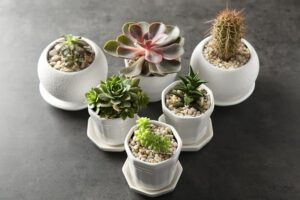How to Grow Succulents Successfully
Succulents have taken the plant world by storm, and for good reason. These architectural beauties combine striking looks with remarkable resilience, making them perfect choices for both novice and experienced plant enthusiasts. Whether you’re looking to add some greenery to your home or expand your existing collection, this comprehensive guide will walk you through everything you need to know about growing succulents successfully.
Understanding Succulents: Nature’s Water Storage Experts
Succulents are a diverse group of plants characterized by their fleshy, thickened parts that store water. This remarkable adaptation allows them to thrive in arid conditions where other plants would wither. From the rosette-forming echeverias to the trailing strings of pearls, the succulent family offers a tremendous variety of shapes, colors, and textures to explore.
According to the United States Department of Agriculture (USDA), succulents are native to various regions around the world, with many species originating from arid and semi-arid environments in Africa, the Americas, and parts of Europe and Asia. This diverse heritage contributes to their varied care requirements and adaptability to different growing conditions. For more information on native succulent species in the US, you can visit the USDA’s Plant Database.
Popular Succulent Varieties for US Growers
The US market offers an incredible selection of succulents suited to different growing conditions and aesthetic preferences. Here are some favorites that have proven particularly successful for American gardeners:
For Indoor Growing
- Echeveria: Known for their rosette form and pastel colors
- Haworthia: Compact, striped varieties that tolerate lower light
- Jade Plant (Crassula ovata): A classic houseplant with woody stems
- String of Pearls (Senecio rowleyanus): Trailing succulent perfect for hanging baskets
For Outdoor Landscapes (Hardy in USDA Zones 8-11)
- Sedum: Diverse genus including ground covers and upright varieties
- Agave: Architectural statement plants with dramatic form
- Sempervivum (Hens and Chicks): Cold-hardy rosettes that multiply readily
- Opuntia (Prickly Pear): Native American cacti with edible fruits
Essential Growing Conditions for Thriving Succulents
Your success with succulents depends largely on providing the right growing environment. Let’s explore the key factors that will help your plants flourish.

Light Requirements: Finding the Sweet Spot
Most succulents evolved in bright, sunny environments, so adequate light is crucial for their health. However, different varieties have different light needs:
When growing succulents indoors, a south or west-facing window usually provides optimal lighting. If natural light is insufficient, especially during shorter winter days, you might consider supplementing with grow lights designed for indoor plants. For outdoor succulents, choose locations based on your local climate—in hot southern regions, some afternoon shade might be beneficial, while northern growers should maximize sun exposure.
Soil and Drainage: The Foundation of Success
Perhaps nothing is more important to succulent health than proper soil and drainage. Unlike traditional houseplants, succulents require specialized soil that allows water to move through quickly rather than holding moisture against the roots.
The ideal succulent mix combines:
- 50-70% mineral components (pumice, perlite, coarse sand)
- 30-50% organic matter (cactus soil, coconut coir)
This balance provides enough organic material to anchor roots and supply nutrients while ensuring excess water drains away quickly. Commercial cactus and succulent mixes can work well, though many experienced growers prefer to create custom blends tailored to their specific growing conditions.
The Environmental Protection Agency (EPA) recommends avoiding garden soil for potted plants, as it can contain contaminants or pests that may harm your succulents. The EPA’s guidelines for healthy soils can be found on their Soils and Growing Media page.
Watering Wisely: The Art of Restraint
More succulents die from overwatering than any other cause. These drought-adapted plants store water in their leaves, stems, or roots, meaning they need far less frequent irrigation than most houseplants. Learning to water properly is perhaps the most important skill in succulent care.
Follow these principles for watering success:
- Water deeply but infrequently: When you do water, saturate the soil completely, allowing excess to drain away.
- Let the soil dry completely between waterings: Most succulents prefer to have their soil dry out entirely before the next watering.
- Adjust for seasonal changes: Reduce watering significantly during winter dormancy periods.
- Consider your environment: Succulents in hot, dry climates with good airflow will need more frequent watering than those in humid or cooler conditions.
A good rule of thumb for many varieties is to water only when the soil has been completely dry for at least three days. When in doubt, wait a few more days—succulents are far more tolerant of underwatering than overwatering.
Potting and Repotting Techniques
Choosing the right container and properly potting your succulents sets the stage for long-term success. Let’s explore the essentials:
Container Selection
The ideal pot for succulents has:
- Drainage holes: Absolutely essential for allowing excess water to escape
- Appropriate size: Only slightly larger than the plant’s root system
- Suitable material: Terracotta is ideal as it’s porous and helps soil dry faster
While glazed ceramic, plastic, or glass containers can work, they retain more moisture, requiring more careful watering practices. If you’re drawn to containers without drainage holes for aesthetic reasons, consider using them as decorative outer pots with properly draining nursery pots inside.

Potting Process
When potting or repotting succulents, follow these steps:
- Cover drainage holes with mesh or a small piece of screen to prevent soil loss while allowing water passage
- Fill the bottom third of the pot with your succulent soil mix
- Remove the plant from its current container, gently loosening compacted roots
- Position the plant so the crown sits slightly above soil level
- Fill in around the roots with additional soil mix, tapping gently to eliminate air pockets
- Wait at least 2-3 days before watering newly potted succulents to allow any damaged roots to heal
Seasonal Care and Maintenance
Different seasons bring changing requirements for your succulent collection. Understanding these seasonal rhythms will help you provide the most appropriate care throughout the year.
Spring and Summer Care
The warm months represent the primary growing season for most succulents. During this time:
- Gradually increase watering frequency as temperatures rise and days lengthen
- Apply a diluted, low-nitrogen fertilizer once a month (half-strength or less of what’s recommended)
- Monitor for pests that become more active in warm weather
- Provide shade during extreme heat waves, especially for varieties with thinner leaves
Fall and Winter Adjustments
As temperatures drop and daylight decreases:
- Reduce watering significantly—many succulents enter dormancy and require minimal moisture
- Discontinue fertilizing until spring
- Move outdoor containers to protected locations before frost
- Provide supplemental light for indoor plants if natural light diminishes
Propagation: Expanding Your Collection
One of the most rewarding aspects of growing succulents is how readily many varieties propagate, allowing you to expand your collection at minimal cost. The three primary methods of succulent propagation are:
Leaf Propagation
Many succulents, particularly those in the Crassulaceae family (Echeveria, Sedum, Crassula), can grow entirely new plants from a single healthy leaf. To propagate from leaves:
- Gently twist a plump, healthy leaf from the mother plant, ensuring you get the entire leaf with no part left on the stem
- Allow the leaf to callus for 2-3 days in a dry location
- Place the leaf on top of well-draining soil, possibly with the end slightly buried
- Mist occasionally, keeping the soil just barely moist
- Within 2-6 weeks, tiny roots and a small rosette will form at the leaf base
- Once the mother leaf withers away, you’ll have a new, independent plant
Stem Cuttings
For succulents with defined stems, such as jade plants and some sedums:
- Using clean scissors or pruning shears, cut a stem segment 2-4 inches long
- Remove lower leaves to expose at least an inch of bare stem
- Allow the cutting to dry and callus for 3-7 days
- Plant the calloused end in succulent soil
- Wait 1-2 weeks before watering lightly
Offsets or “Pups”
Many rosette-forming succulents and cacti produce small offsets around their base:
- Wait until offsets are at least 1/5 the size of the mother plant
- Use a clean knife to separate the offset, ensuring it has some roots if possible
- Allow the cut surface to callus for a few days
- Plant in well-draining succulent soil
The National Gardening Association recommends allowing all succulent cuttings and separated offsets to dry before planting to prevent rot. Their research indicates success rates increase by 60% when proper callusing occurs before planting.
Troubleshooting Common Succulent Problems
Even with the best care, succulents can sometimes develop issues. Learning to identify and address common problems quickly will help keep your collection healthy.
Pest Management
The most common pests affecting succulents include:
- Mealybugs: These appear as white, cottony masses in leaf joints or crevices
- Spider Mites: Tiny arachnids that cause stippled discoloration and fine webbing
- Scale Insects: Small, immobile pests that attach firmly to leaves and stems
- Fungus Gnats: Small flying insects that indicate overly wet soil conditions
For most succulent pests, treatment options include:
- Isolating affected plants to prevent spread
- Manually removing pests using isopropyl alcohol on a cotton swab
- Spraying with insecticidal soap or neem oil solutions
- Addressing any underlying cultural issues (typically overwatering)
Disease Prevention and Treatment
Succulents are relatively disease-resistant when properly grown, but can still develop issues:
- Root Rot: Caused by overwatering; characterized by blackening stems and translucent, mushy leaves
- Powdery Mildew: White powdery patches on leaves in humid conditions
- Leaf Spot Diseases: Dark spots on foliage that may spread and coalesce
Prevention is always preferable to treatment. Maintain good air circulation, avoid overhead watering, and ensure proper drainage. If diseases do occur, remove affected parts, adjust care practices, and consider appropriate fungicides as a last resort.

Creating Stunning Succulent Displays
Beyond basic care, part of the joy of growing succulents comes from creating beautiful arrangements that showcase their diverse forms and colors.
Container Gardens and Arrangements
When designing succulent containers:
- Group plants with similar water and light needs
- Consider mature sizes and growth habits
- Create visual interest through contrasting textures and complementary colors
- Use top dressing materials like decorative gravel to enhance the appearance and reduce soil splashing
Landscaping with Succulents
In suitable climates (generally USDA zones 8-11), succulents make striking landscape elements:
- Use them in rock gardens or xeriscaped areas to reduce water consumption
- Create drought-tolerant ground covers with spreading sedums
- Incorporate architectural varieties like agaves as focal points
- Combine with other drought-adapted plants like ornamental grasses and Mediterranean herbs
Conclusion: Your Succulent Journey
Growing succulents successfully combines science and art. While their care requirements differ from traditional houseplants, the basic principles are straightforward: provide bright light, well-draining soil, and restrained watering. Master these fundamentals, and you’ll be rewarded with an endlessly fascinating collection of plants that offer beauty, interest, and satisfaction with minimal maintenance.
Remember that each succulent variety has unique needs, and your specific growing environment will influence how you care for your plants. Don’t be afraid to experiment, observe, and adjust your approach based on how your succulents respond. With attention and patience, you’ll develop the knowledge and intuition needed to help your succulent collection thrive for years to come.
| Light Category | Daily Requirement | Best Varieties | Signs of Inadequate Light | Signs of Excessive Light |
|---|---|---|---|---|
| High Light | 6+ hours direct sun | Echeveria, Sedum, Agave, most cacti | Etiolation (stretching), pale coloration, weak growth | Sunburn (brown/white patches), color bleaching |
| Medium Light | 4-6 hours filtered sun | Jade Plant, Aloe, Gasteria, Haworthia fasciata | Slow growth, reduced color intensity | Leaf scorch, especially on newer growth |
| Lower Light | Bright indirect light | Haworthia, Snake Plant, ZZ Plant, some Gasterias | Minimal growth, potential rot if overwatered | Rarely an issue with these varieties |






